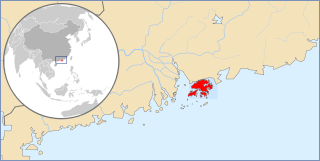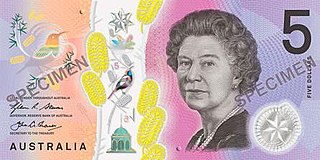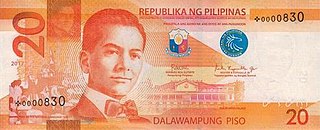Timeline
1910
These banknotes were overprinted on private issue from various banks, signatures were Jas R Collins and Geo T Allen. A total of 152,675 banknotes were issued.
1913–1925
Signatories: Collins/Allen (1914–1917); Cerutty/Collins (1918–1924)
The first ten-pound note was issued in 1913, with 2,039,188 being printed. The reverse of the note possessed horizontal red/yellow bands.
1925–1934
Signatories: Kell/Collins (1925–1926); Riddle/Heathershaw (1927); Riddle/Sheehan (1933)
Designed and printed by Thomas S. Harrison, the note was made longer and narrower to improve printing efficiency (six notes could fit onto a sheet instead of four) and further security features were added: a basketweave watermark was used around the borders and the denomination appears in watermarks in the center of the note. 3,610,000 of these notes were printed.
1934–1966
Sheehan/McFarlane (1940); Armitage/McFarlane (1943); Coombs/Watt (1949); Coombs/Wilson (1952)
These were all legal tender and included two basic designs, those of 1934–40 has 3,076,000 issues, 1940–54 with 21,924,000 and 1954–66 with 61,151,000 banknotes issued.
The Kwacha is the currency of Zambia. It is subdivided into 100 Ngwee.

Legal tender is a form of money that courts of law are required to recognize as satisfactory payment for any monetary debt. Each jurisdiction determines what is legal tender, but essentially it is anything which when offered ("tendered") in payment of a debt extinguishes the debt. There is no obligation on the creditor to accept the tendered payment, but the act of tendering the payment in legal tender discharges the debt.

The Bangladeshi taka is the currency of Bangladesh. In Unicode, it is encoded at U+09F3৳BENGALI RUPEE SIGN.

The Pakistani rupee is the official currency in the Islamic Republic of Pakistan. The issuance of the currency is controlled by the State Bank of Pakistan. It was officially adopted by the Government of Pakistan in 1949. Earlier the coins and notes were issued and controlled by the Reserve Bank of India until 1949, when it was handed over to the Government and State Bank of Pakistan, by the Government and Reserve Bank of India.

The pound was the currency of Australia from 1910 until 14 February 1966, when it was replaced by the Australian dollar. Like other £sd currencies, it was subdivided into 20 shillings, each of 12 pence.
The pound is the currency of Guernsey. Since 1921, Guernsey has been in currency union with the United Kingdom and the Guernsey pound is not a separate currency but is a local issue of sterling banknotes and coins, in a similar way to the banknotes issued in Scotland, England and Northern Ireland. It can be exchanged at par with other sterling coinage and notes.

The issue of banknotes of the Hong Kong dollar is governed in the Special Administrative Region of Hong Kong by the Hong Kong Monetary Authority (HKMA), the governmental currency board and central bank of Hong Kong. Under licence from the HKMA, three commercial banks issue their own banknotes for general circulation in the region. Notes are also issued by the HKMA itself.

The Australian Notes Act 1910 was an Act of the Parliament of Australia which allowed for the creation of Australia's first national banknotes. In conjunction with the Coinage Act 1909 it created the Australian pound as a separate national currency from the pound sterling.

The Australian twenty-dollar note was issued when the currency was changed from the Australian pound to the Australian dollar on 14 February 1966. It replaced the £10 note which had similar orange colouration. There have been only three different issues of this denomination: a paper note which had a gradient of yellow and red, with a distinct orange background, and two designs of polymer note which can be recognised for their distinct red-orange colouration, and so it was nicknamed a "lobster". The first polymer note was issued on 31 October 1994 and the Next Generation polymer banknote was issued on 9 October 2019.

The Australian ten-dollar note was one of the four original decimal banknotes excluding the Australian five-dollar note, was issued when the currency was changed from the Australian pound to the Australian dollar on 14 February 1966. It replaced the Australian five-pound note, which included the same blue colouration. There have been four different issues of this denomination: a paper banknote; a commemorative hi-polymer note, to celebrate the bicentennial of Australian settlement ; the 1993–2017 polymer note; and from September 2017 a polymer note featuring a transparent window.

The 10/- banknote was first issued on 1 May 1913 as a blue banknote payable in gold. It was equal to a half sovereign gold coin. The sizes varied but the design was the same for the following issues: 1913–1914 issue was 194×83mm, 1915–1923 197×88 mm, 1923–1933 180×78mm. This issue was payable in gold but subsequent issues were legal tender.

The Australian five-dollar note was first issued on 29 May 1967, fifteen months after the currency was changed from the pound to the dollar on 14 February 1966. It was a new denomination with mauve colouration – the pre-decimal system had no denomination with a value of £21⁄2. The first polymer version of the note was introduced on 7 July 1992. A major design update was issued on 1 September 2016, with a minor update to the signatures in 2019.

The Australian one-pound note was the most prevalent banknote in circulation with the pound series, with the last series of 1953–66 having 1,066 million banknotes printed. The first banknotes issued were superscribed notes purchased from 15 banks across Australia and printed with Australian Note and were payable in gold. Upon decimalisation in 1966, it was worth two dollars.

The Australian five-pound note was first issued in 1913 and featured a scene looking along the Hawkesbury River near Brooklyn, New South Wales, from the railway toward Kangaroo Point. Upon decimalisation it had a value of 10 dollars.
The 10 Polish Złotych note is the lowest value złoty banknote and has been used since the redenomination of the złoty in 1995. The note is used as the sole currency in Poland, a country with a population of about 38 million.
New Zealand dollar banknotes are the banknotes in circulation in New Zealand, the Cook Islands, Tokelau, Niue and the Pitcairn Islands, denominated in the New Zealand dollar. They are issued by the Reserve Bank of New Zealand and since 1999 have been made of polymer.

The Philippine twenty-peso note (₱20) is a denomination of Philippine currency. It is the smallest banknote denomination in general circulation in the Philippines. Philippine president Manuel L. Quezon is currently featured on the front side of the note, while the Banaue Rice Terraces and the Asian palm civet is featured on the reverse side.

The Philippine one hundred-peso note (₱100) is a denomination of Philippine currency. Philippine president Manuel A. Roxas is currently featured on the front side of the bill, while the Mayon Volcano and the whale shark are featured on the reverse side.

The Philippine ten-peso note (₱10) was a denomination of Philippine currency. In its latest incarnation, Apolinario Mabini and Andrés Bonifacio are featured on the front side of the notes, while the Barasoain Church and a Blood Compact scene of the Katipuneros are featured on the reverse side. This banknote was circulated until the demonetization of main banknotes under the New Design Series on January 3, 2018. Its printing was stopped in 2001 and was replaced by coins.

Banknotes of the Australian pound were first issued by numerous private banks in Australia, starting with the Bank of New South Wales in 1817. Acceptance of private bank notes was not made compulsory by legal tender laws but they were widely used and accepted. The Queensland government issued treasury notes (1866–1869) and banknotes (1893–1910), which were legal tender in Queensland. The New South Wales government issued a limited series of Treasury Notes in 1893.
















